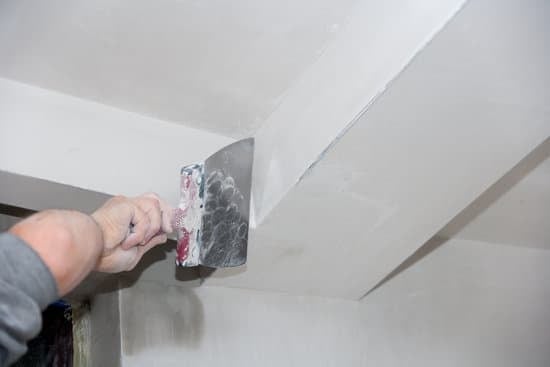How we can improve assisted living homes is a pressing concern in today’s society as the demand for these facilities continues to grow. Assisted living homes serve a crucial purpose in providing care and support for older adults and individuals with disabilities who may need assistance with daily activities.
In this article, we will explore the current challenges facing assisted living homes, and examine various strategies for improvement in areas such as person-centered care, innovative technology, staff training, physical environment, community engagement, and advocacy.
Assisted living homes are designed to provide a supportive environment for individuals who require some level of assistance with activities of daily living. However, there are several existing challenges that need to be addressed in order to enhance the quality of care and overall experience for residents.
By focusing on person-centered care, implementing innovative technology solutions, providing staff training and support, creating a safe physical environment, fostering community engagement, and advocating for policy changes, we can work towards improving the standards of assisted living homes.
One of the key areas of improvement for assisted living homes lies in shifting the focus towards person-centered care. This approach involves tailoring care plans to meet the individual needs and preferences of each resident.
By recognizing the unique strengths and abilities of every person under their care, assisted living facilities can create a more personalized and fulfilling experience that promotes overall well-being. Through this article, we will delve into the specific ways that person-centered care can be implemented to improve the quality of life for residents in assisted living homes.
Current Challenges
Assisted living homes have become an integral part of the long-term care system, providing a supportive environment for elderly individuals who require assistance with daily activities. However, these facilities are not without their challenges. One major issue is the lack of consistent and personalized care for residents, leading to dissatisfaction and potential health risks. In addition, there are concerns about staff turnover, insufficient regulations, and limited resources in many assisted living homes.
Another significant challenge in these facilities is the prevalence of social isolation among residents. Many seniors struggle with loneliness and feelings of disconnection from the community, which can have detrimental effects on their mental and emotional well-being. Furthermore, there is a need for improved communication between staff, residents, and their families to ensure that everyone is involved in decision-making processes regarding care plans and overall quality of life.
Lastly, the affordability and accessibility of assisted living homes remain key issues for many individuals and families. The cost of long-term care can be prohibitive for some, while others may face limited options due to geographic location or specific care needs. These challenges highlight the importance of addressing systemic issues to improve the overall quality of care provided in assisted living homes.
Person-Centered Care
Assisted living homes are designed to provide supportive housing and personalized care for individuals who require assistance with daily living activities. However, one of the current challenges facing these facilities is the need to shift the focus from a traditional, institutional approach to person-centered care that prioritizes individual needs and preferences. By embracing this approach, assisted living homes can enhance the quality of life for residents and improve overall satisfaction with their care.
To achieve person-centered care in assisted living homes, it is essential to re-evaluate current practices and adopt a more holistic approach to meeting residents’ needs. This involves moving away from a one-size-fits-all model of care and instead recognizing each individual’s unique background, preferences, and abilities. Here are some key strategies for shifting the focus to person-centered care:
- Conducting individualized assessments: Taking the time to understand each resident’s physical, social, emotional, and cognitive needs can guide personalized care planning.
- Involving residents in decision-making: Empowering residents to participate in decisions about their daily routines, activities, and care services promotes autonomy and dignity.
- Creating meaningful social connections: Building relationships between residents, staff, family members, and the larger community can combat loneliness and isolation often experienced in assisted living settings.
By prioritizing person-centered care in assisted living homes, providers can create a more nurturing environment that supports each resident’s unique well-being. This shift not only benefits the individuals receiving care but also contributes to a more fulfilling and effective caregiving experience for staff members.
Innovative Technology
As technology continues to advance, there are numerous opportunities for assisted living homes to improve the quality of care and support provided to their residents. Implementing innovative technological solutions can address various challenges and enhance the overall experience for both residents and staff members. Here are several ways that technology can be utilized to improve assisted living homes:
- Remote Monitoring Devices: Installing sensors and IoT (Internet of Things) devices can help staff members keep track of residents’ health status, movement patterns, and sleep quality. This enables proactive interventions and ensures that any issues can be addressed promptly.
- Telemedicine Services: Incorporating telehealth tools allows residents to connect with healthcare providers without the need for transportation or travel. This enhances access to medical care and reduces the risk of exposure to illnesses.
- Electronic Health Records (EHR): Transitioning to digital documentation streamlines the management of residents’ medical histories, medications, and treatment plans. It also promotes effective communication between different healthcare professionals involved in a resident’s care.
Furthermore, virtual reality (VR) technology can offer immersive experiences for cognitive stimulation and entertainment, while robotics can assist with mobility support and household tasks. Implementation of these technologies requires strategic planning, financial investment, as well as training for staff members to effectively integrate them into daily operations.
Incorporating innovative technology in assisted living homes is a critical step in improving the overall quality of care and creating a safer, more comfortable environment for residents. By leveraging tech solutions such as remote monitoring devices, telemedicine services, EHR systems, virtual reality, and robotics, assisted living facilities can enhance their ability to meet the individual needs of each resident while ensuring efficient operations.
Staff Training and Support
In order to improve the quality of care in assisted living homes, it is crucial to prioritize staff training and support. One of the main challenges in many assisted living facilities is the high turnover rate among caregivers and support staff. This can result in inconsistent care for residents and a lack of continuity in their treatment. By investing in comprehensive training programs for staff members, these issues can be addressed, resulting in better care for residents.
The training should cover topics such as communication skills, understanding different physical and cognitive needs, managing difficult behaviors, and promoting resident engagement. Additionally, ongoing support and mentorship for staff can help them feel more confident and capable in their roles. This can ultimately lead to higher job satisfaction, reduced turnover rates, and improved overall quality of care.
According to the National Center for Assisted Living (NCAL), well-trained staff is a key factor in providing high-quality care in assisted living homes. In fact, NCAL recommends that all staff receive dementia-specific training at least once a year.
Furthermore, this organization emphasizes the importance of ongoing education for staff to stay updated on best practices and evidence-based care approaches. With a focus on education and support for personnel, the level of care provided in assisted living homes can be significantly enhanced.
| Training Topics | Frequency |
|---|---|
| Communication Skills | Ongoing |
| Dementia-Specific Care | At least once a year |
| Promoting Resident Engagement | Ongoing |
Physical Environment
Creating a safe and comfortable living space is crucial in improving the overall quality of life for residents in assisted living homes. The physical environment plays a major role in the well-being of the individuals who reside there, and it is important to ensure that their needs are met in terms of safety, accessibility, and comfort.
Accessibility and Safety
One of the key factors in creating a suitable living space for residents is ensuring that it is accessible and safe. This includes features such as handrails, non-slip flooring, properly lit hallways and common areas, as well as easily accessible emergency call systems. Adequate security measures are also essential to provide residents with peace of mind and a sense of safety in their living environment.
Comfortable Living Spaces
In addition to safety considerations, it is imperative to create comfortable living spaces within assisted living homes. This can include well-designed private rooms or apartments that offer privacy and personalization for residents. Common areas such as lounges, dining areas, and outdoor spaces should be furnished with comfortable seating, pleasant decor, and opportunities for social interaction.
Therapeutic Environments
Another important aspect of the physical environment in assisted living homes is the integration of therapeutic elements. Natural lighting, access to outdoor spaces such as gardens or walking paths, as well as sensory stimulation through art and music can contribute to a positive and calming atmosphere for residents. Incorporating these elements into the design can help reduce stress, anxiety, and depression among residents.
Community Engagement
Creating Meaningful Social Activities
One of the key aspects of improving assisted living homes is by fostering social interaction and inclusion among residents. This can be achieved by creating meaningful social activities that cater to the diverse interests and abilities of the individuals living in these facilities.
Activities such as art classes, book clubs, gardening, music therapy, and even pet therapy can provide opportunities for residents to connect with one another and form friendships. By offering a variety of options, residents can find activities that genuinely interest them, leading to increased participation and a greater sense of belonging within the community.
Family Involvement
In addition to creating social activities within the facility, it is important to encourage family involvement in the lives of assisted living residents. Family members provide essential emotional support and connection to the outside world for many individuals in these homes.
Assisted living facilities should make an effort to involve families in planning events, decision-making processes, and care plans for their loved ones. Open communication and participation from family members can greatly contribute to the overall well-being and happiness of residents.
Connecting With the Larger Community
To create a sense of inclusion and prevent feelings of isolation among residents, it’s crucial for assisted living homes to connect with the larger community. This can be achieved through partnerships with local schools, volunteer organizations, or other community groups. Intergenerational programs that bring together seniors with children or teenagers have been shown to be particularly beneficial for both age groups.
Additionally, arranging outings to local events or inviting community members to give presentations at the facility can help residents feel connected to society at large. These connections create a support system that goes beyond the walls of the assisted living home and helps individuals lead more fulfilling lives.
Advocacy and Policy Changes
Improving assisted living homes involves influencing government and industry standards to ensure that the needs of residents are met. Advocacy is an important tool in bringing about changes in the policies that govern these facilities, as well as in creating new standards for the industry. By working with lawmakers and regulatory agencies, advocates can push for reforms that prioritize the safety, well-being, and quality of life for residents in these settings.
One of the key areas where advocacy can make a difference is in staffing requirements. Many assisted living homes are understaffed, leading to compromised care for residents. By advocating for regulations that mandate minimum staffing levels and appropriate staff-to-resident ratios, advocates can ensure that residents receive the attention and support they need. Additionally, advocating for better training and qualifications for staff members can contribute to improved care quality.
Furthermore, advocating for policy changes related to transparency and accountability can also enhance the overall quality of care in assisted living homes. This may involve pushing for regulations that require regular reporting on incident rates, quality measures, and resident satisfaction scores. By holding these facilities accountable through public reporting mechanisms, advocates can drive improvements in care standards across the industry.
| Advocacy Initiatives | Impact on Care Quality |
|---|---|
| Mandating minimum staffing levels | Ensures residents receive adequate attention and support |
| Better training requirements for staff members | Contributes to improved care quality through skilled workforce |
| Regulations for transparency and accountability | Drives improvements in care standards through public reporting mechanisms |
Conclusion
In conclusion, improving assisted living homes requires a comprehensive approach that addresses multiple aspects of care and support for residents. By shifting the focus to person-centered care, implementing innovative technology solutions, providing staff training and support, creating a safe and comfortable physical environment, fostering community engagement, and advocating for policy changes, we can enhance the overall quality of life for individuals in assisted living facilities.
It is essential to recognize the unique needs and preferences of each resident and tailor care plans accordingly. By prioritizing person-centered care, assisted living homes can promote independence, dignity, and overall well-being for their residents. This approach also involves actively involving residents in decision-making processes regarding their own care and encouraging autonomy whenever possible.
In addition to person-centered care, leveraging innovative technology can greatly improve the quality of care provided in assisted living homes. Whether it’s through assistive devices, telemedicine options, or remote monitoring systems, technology can enhance safety, communication, and access to medical resources for both residents and staff. Furthermore, ongoing staff training and support are crucial for ensuring that caregivers have the knowledge and skills necessary to provide high-quality care.
By investing in education and professional development opportunities for staff members, assisted living homes can further enhance the level of support they offer to their residents. Overall, by addressing these key areas – among others – we can work towards creating an environment where residents receive the best possible care while maintaining a sense of independence and belonging within their communities.
Frequently Asked Questions
What Can We Do to Increase the Quality of Life for Those Living in Care Facilities?
There are several ways to increase the quality of life for those living in care facilities. One important aspect is to ensure that they have access to various recreational and social activities to keep them engaged and connected with others.
Additionally, providing nutritious and delicious meals can significantly improve their well-being. Another key factor is ensuring that the staff is well-trained, compassionate, and attentive to the individual needs of the residents.
What Are the Disadvantages of Assisted Living?
While assisted living can offer support and assistance to seniors, there are also some disadvantages to consider. One downside is the cost, as these facilities can be quite expensive and may not be affordable for everyone.
Another disadvantage is the potential loss of independence, as residents may need to adhere to certain rules and regulations within the facility. Additionally, transitioning to a new environment can be stressful and challenging for some individuals.
What Services Do Most Assisted Living Facilities Provide?
Most assisted living facilities provide a range of services aimed at meeting the needs of their residents. These often include assistance with daily activities such as bathing, dressing, and medication management.
Many facilities also offer housekeeping services, meal preparation, transportation assistance, and access to health care resources. Additionally, social and recreational programs are commonly available to help residents stay active and engaged within the community.

I’m thrilled to have you here as a part of the Remodeling Top community. This is where my journey as an architect and remodeling enthusiast intersects with your passion for transforming houses into dream homes.





